(By Khalid Masood)
The rise of religious nationalism, epitomized by the Rashtriya Swayamsevak Sangh (RSS), has transformed India from a secular democracy into a majoritarian state marked by Hindu supremacist ideology, anti-minority violence, and democratic backsliding. The RSS’s century-long project of establishing a Hindu Rashtra (Hindu nation) has fueled communal tensions, undermined pluralism, and escalated regional conflicts, as evidenced by the May 2025 Indo-Pakistan clash.
2. The Historical Context of Pre-RSS India
The RSS emerged in a colonial India marked by communal divisions and British policies that exacerbated Hindu-Muslim tensions. The British “divide-and-rule” strategy, exemplified by the 1905 Bengal Partition, deepened religious identities, fostering mutual suspicion. The early 20th century saw the rise of communal organizations, such as the Hindu Mahasabha (1915) and Muslim League (1906), which politicized religious identities. European fascist movements, particularly Mussolini’s Italy and Hitler’s Germany, influenced Indian intellectuals, including RSS founders, who admired their emphasis on racial purity and militarized nationalism. This context set the stage for the RSS’s formation in 1925 as a Hindu nationalist response to perceived Muslim threats and colonial subjugation.
3. Founders and Ideological Architects
3.1 Vinayak Damodar Savarkar: Father of Hindutva
Vinayak Damodar Savarkar (1883–1966), a revolutionary-turned-ideologue, articulated Hindutva in his 1923 book Hindutva: Who is a Hindu?. He defined Hindus as those who consider India their fatherland, motherland, and holy land, implicitly excluding Muslims and Christians. Imprisoned for anti-British activities (1910–1924), Savarkar’s later writings advocated a militarized Hindu nation, drawing parallels with European fascism. His vision of a Hindu Rashtra prioritized Hindu cultural and political dominance, laying the ideological groundwork for the RSS.
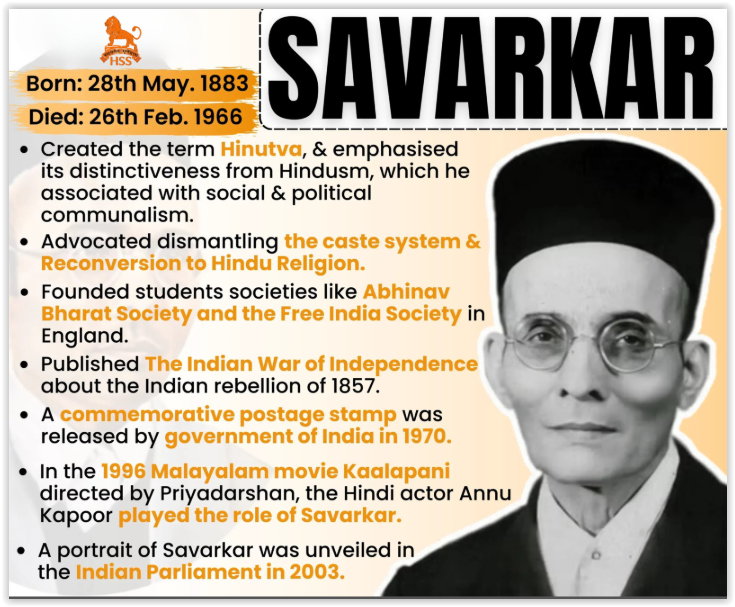
3.2 M.S. Golwalkar: Ideological Formalization
Madhav Sadashiv Golwalkar (1906–1973), known as “Guruji,” served as RSS chief from 1940 to 1973, shaping its organizational and ideological framework. His 1939 book We, or Our Nationhood Defined (inspired by Savarkar’s Rashtra Mimansa) echoed Nazi ideals, advocating that non-Hindus adopt Hindu culture or live as second-class citizens. Golwalkar’s Bunch of Thoughts (1966) labeled Muslims, Christians, and Communists as “internal threats,” justifying their marginalization. Under his leadership, the RSS expanded its shakhas (local branches) and adopted paramilitary training, cementing its militant character.
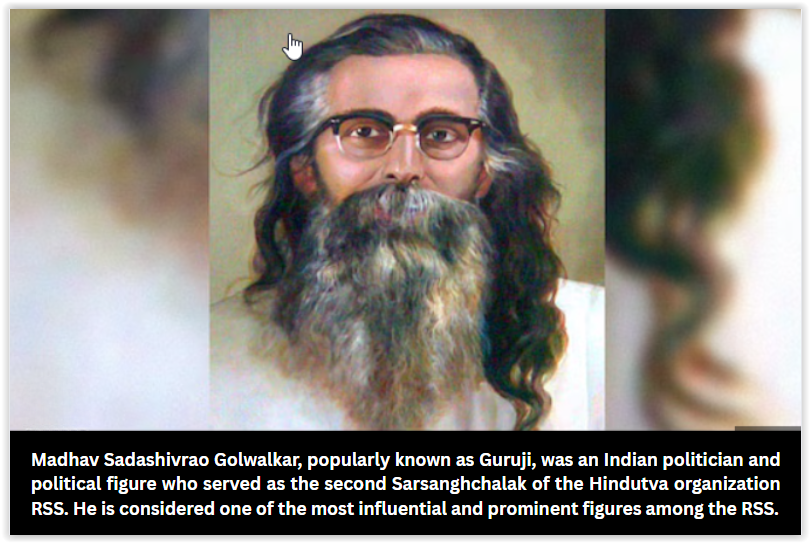
4. Evolution and Organizational Structure of RSS
Founded on September 27, 1925, by K.B. Hedgewar, the RSS aimed to unite Hindus through “character training” and Hindu discipline. Its hierarchical structure revolves around shakhas, daily gatherings for physical drills, ideological indoctrination, and cultural activities. By 2025, the RSS boasts six million members and 40,000 shakhas, making it the world’s largest volunteer organization.
The RSS created the Sangh Parivar, a network of affiliates including:
- Bharatiya Janata Party (BJP): Political wing, ruling since 2014.
- Vishwa Hindu Parishad (VHP): Religious outreach, known for militant campaigns.
- Bajrang Dal: Youth wing, implicated in communal violence.
- Akhil Bharatiya Vidyarthi Parishad (ABVP): Student wing, active in campuses.
Propaganda is disseminated through schools, literature, and media outlets, while physical training includes lathi (stick) drills, fostering a paramilitary ethos.
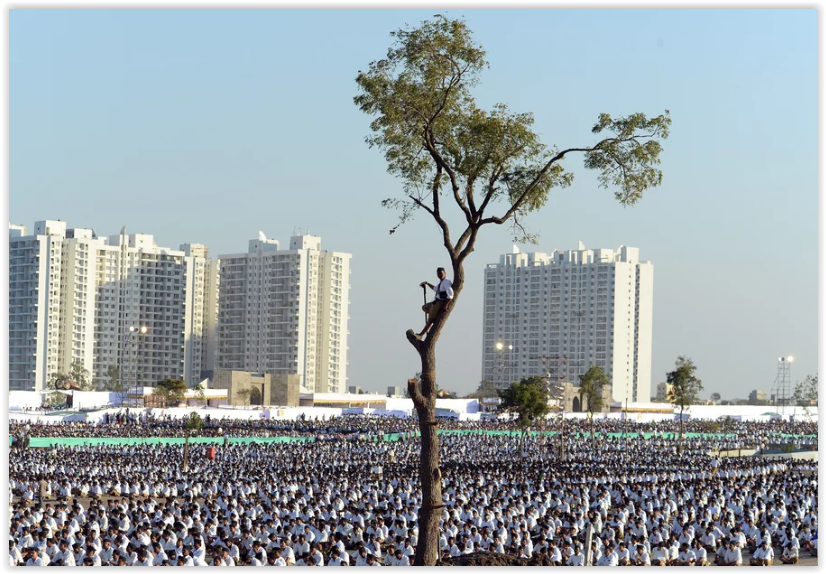
5. RSS and Indian Politics: From Fringe to Power
The RSS initially avoided politics, focusing on cultural transformation. However, its role in Partition violence (1947) and Nathuram Godse’s assassination of Mahatma Gandhi (1948), a former RSS member, led to its first ban. Despite no direct link to the assassination, the RSS’s communal rhetoric was blamed.
Subsequent bans (1966, 1975–77) during the Emergency strengthened its underground network. The formation of the BJP in 1980 marked its political entry, culminating in national power in 1998 and 2014 under Narendra Modi, a lifelong RSS member. The RSS now influences the judiciary, military, education, and media, with “Godi Media” outlets amplifying its narrative.
6. Anti-Minority Violence and Militant Hindutva
6.1 Anti-Muslim Atrocities
The RSS and its affiliates have orchestrated systemic violence against India’s 200 million Muslims, leveraging Hindutva’s anti-Muslim ideology to justify atrocities, lynchings, and discriminatory laws. These actions, rooted in Golwalkar’s portrayal of Muslims as “internal threats,” have escalated under BJP rule, polarizing society and undermining secularism. Key episodes include the 1992 Babri Masjid demolition, 2002 Gujarat pogrom, 2020 Delhi riots, and ongoing cow vigilantism, amplified by Godi Media’s disinformation, particularly during the May 2025 Indo-Pakistan clash.
1992 Babri Masjid Demolition and Nationwide Riots
The demolition of the Babri Masjid in Ayodhya on December 6, 1992, marked a watershed moment in India’s communal history, orchestrated by the Vishwa Hindu Parishad (VHP), a key RSS affiliate. The 16th-century mosque, claimed as Lord Ram’s birthplace, was razed by a mob of over 150,000 kar sevaks mobilized by the VHP, Bajrang Dal, and RSS, with BJP leaders like L.K. Advani present. The RSS’s shakhas indoctrinated volunteers with narratives of Muslim “invasion,” rooted in Golwalkar’s writings. The Liberhan Commission (2009) described the act as a “planned conspiracy” involving RSS coordination. The demolition triggered riots killing over 2,000, mostly Muslims, with Shiv Sena-led attacks in Mumbai causing 900 deaths, per the Srikrishna Commission (1998). The RSS’s portrayal of the event as a “Hindu awakening” boosted the BJP’s rise, while the 2019 Supreme Court verdict granting the site for a Ram Temple reinforced Hindutva’s narrative. X posts (@MadilPTI, 2025) label the verdict a “legalization of RSS’s vandalism.”
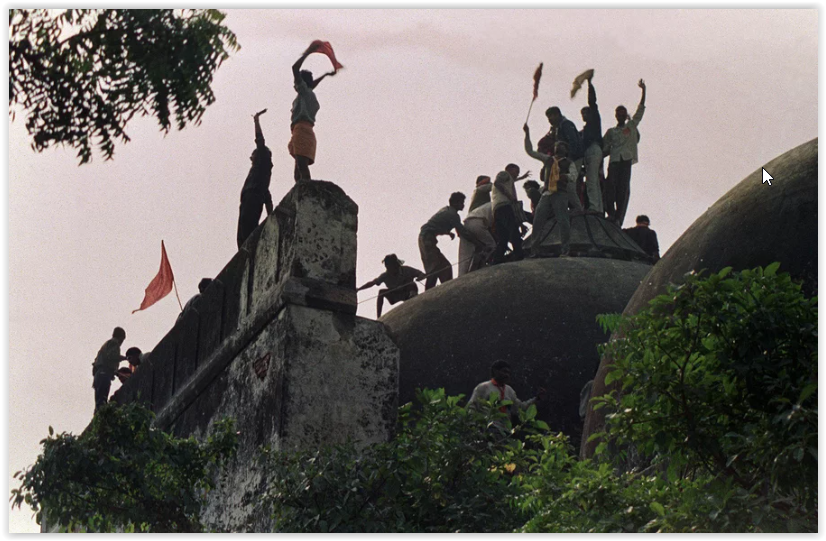
2002 Gujarat Pogrom: State-Sponsored Violence Under Modi
The Gujarat riots of February–March 2002, under BJP Chief Minister Narendra Modi, killed over 2,000 Muslims, displaced 150,000, and involved widespread rape, with mobs using voter lists to target Muslim homes, per Human Rights Watch (2002). Sparked by a train fire in Godhra killing 59 Hindus, the riots saw RSS, VHP, and Bajrang Dal members lead attacks, with police collusion alleged in the Tehelka sting (2007). Modi’s delay in deploying the army drew international condemnation, leading to a U.S. travel ban until 2014. The RSS framed the riots as a “Hindu reaction,” a narrative echoed by Godi Media in 2025. The lack of convictions for senior RSS or BJP leaders fuels Muslim distrust, with X posts (@nabilajamal_, March 2025) calling Gujarat “RSS’s laboratory for ethnic cleansing.”
2020 Delhi Riots: Communal Violence Amid Anti-CAA Protests
The February 2020 Delhi riots, during anti-CAA protests, killed 53, mostly Muslims, and injured over 200. The CAA, excluding Muslims from citizenship benefits, sparked protests met with RSS-affiliated violence in Northeast Delhi, per Amnesty International (2020). BJP leaders like Kapil Mishra incited mobs, with RSS shakhas coordinating attacks via WhatsApp, per a 2021 Citizen’s Tribunal. Police inaction and Godi Media’s portrayal of the riots as a “Muslim conspiracy” shielded RSS involvement. Minimal convictions by 2025 highlight judicial bias, with X posts (@PTIofficial, February 2025) condemning the riots as “RSS-orchestrated genocide.”
Ongoing Issues: Cow Vigilantism, Lynchings, and Anti-Conversion Laws
Since 2014, the RSS has intensified anti-Muslim campaigns through cow vigilantism, lynchings, and anti-conversion laws. Over 50 Muslims died in cow-related lynchings from 2015 to 2023, per Human Rights Watch, with incidents like the 2015 Dadri lynching involving Bajrang Dal members. Anti-conversion laws in BJP-ruled states, targeting “love jihad,” led to 1,000 Muslim arrests by 2025, per The Wire. RSS leaders’ hate speeches, like Pravin Togadia’s 2014 call to “evict Muslims,” face minimal repercussions. The 2025 Indo-Pakistan clash saw Godi Media amplify RSS’s anti-Muslim rhetoric, falsely claiming “jihadi” infiltration, debunked by @zarrar_11PK. These campaigns marginalize Muslims, undermining India’s secular fabric.
7. Recent Events: May 7–11, 2025, Indo-Pakistan Clash and Godi Media
The May 2025 Indo-Pakistan conflict, triggered by India’s Operation Sindoor airstrikes following the Pahalgam attack, escalated communal tensions. The RSS’s narrative, amplified by Godi Media, portrayed the clash as a Hindu defense against Muslim aggression, despite Pakistan’s defensive response under Field Marshal Asim Munir. Media outlets like Republic TV and Zee News spread disinformation, claiming exaggerated Indian victories and demonizing Pakistan, ignoring civilian casualties from Indian strikes.
X posts reflect polarized sentiment, with some (@PTIofficial) condemning the RSS’s fascist roots and others (@senseidraunzer) criticizing its anti-Muslim rhetoric. Godi Media’s role in suppressing dissent and promoting Hindutva has eroded journalistic integrity, aligning with RSS propaganda to stoke nationalism.
8. International Outlook and Global Implications
The RSS’s global reach includes the Hindu Swayamsevak Sangh (HSS) in 39 countries, mobilizing diaspora support for BJP campaigns, as seen in the 2019 “Howdy Modi” event. India’s democratic decline, noted by Freedom House and V-Dem, has raised concerns, yet Western governments remain silent due to strategic ties. Gulf states, reliant on Indian labor, also avoid criticism, despite anti-Muslim policies. The RSS’s expansionist rhetoric, claiming territories like Pakistan, risks further regional instability, as seen in the 2025 clash.
9. Comparative Analysis
The RSS shares traits with European fascist movements:
- Ideological Parallels: Golwalkar’s admiration for Nazi racial purity mirrors Hitler’s policies, while Hedgewar’s shakhas emulate Mussolini’s youth brigades.
- Global Comparisons: Like the Muslim Brotherhood, the RSS uses cultural cover for political aims, but its paramilitary structure is closer to Zionist militias like Irgun.
- Religion and Power: The RSS’s use of Hinduism for consolidation mirrors Iran’s theocratic model, prioritizing majoritarian control over pluralism.
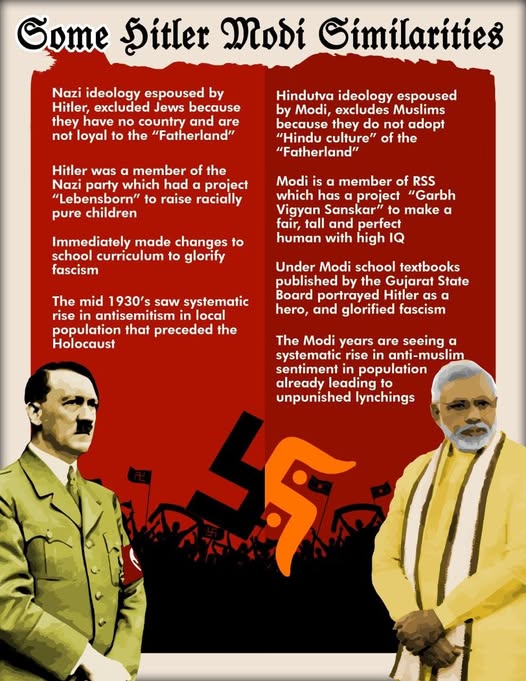
10. Resistance and Counter Movements
Despite the RSS’s institutional dominance, its Hindutva agenda faces robust resistance from secular forces, minority communities, and civil society, who challenge its exclusionary and casteist ideology. Secular parties like the Indian National Congress, rooted in Nehruvian secularism, and intellectuals like Dr. B.R. Ambedkar, who critiqued Hindutva’s caste foundations, have historically opposed the RSS. Minority communities—Muslims, Dalits, Sikhs, Christians, and Buddhists—play a pivotal role in resisting assimilation, while activist groups and international watchdogs document abuses, fostering hope for pluralism.
Muslim Resistance: India’s 200 million Muslims, targeted by RSS-led violence, have resisted through legal challenges and community organizing. Groups like the All India Muslim Personal Law Board and activists like Asaduddin Owaisi counter anti-Muslim laws, such as the CAA, while X campaigns like #MuslimLivesMatter amplify their voice. The 2020 Delhi riots galvanized Muslim youth to document RSS abuses, strengthening resistance.
Sikh Resistance: Contesting Assimilation and Resisting Hindutva’s Narrative
The Sikh community, with its distinct religious, cultural, and historical identity rooted in the teachings of Guru Nanak and the ten Sikh Gurus, has faced persistent efforts by the RSS to subsume Sikhism into the broader Hindu fold. The RSS’s Hindutva ideology portrays Sikhism as a derivative of Hinduism, framing Sikh Gurus as defenders of Hindu dharma against Mughal rule. RSS publications like Organiser depict Guru Gobind Singh as a “Hindu warrior,” ignoring the Khalsa’s distinct identity established in 1699. Such efforts have provoked resistance from Sikh organizations, including the Shiromani Gurdwara Parbandhak Committee (SGPC) and Akal Takht, which condemn attempts to rewrite Sikh history as “cultural aggression.”
Historical tensions escalated during the 1980s, particularly after Operation Blue Star (1984), when Indian forces stormed the Golden Temple, leading to anti-Sikh riots in Delhi that killed over 3,000 Sikhs. The RSS’s alleged complicity in mobilizing mobs, as documented by the Nanavati Commission (2005), and its failure to condemn the violence deepened Sikh mistrust. Recent BJP policies, such as the 2019 CAA, have further strained relations, as Sikhs perceive them as marginalizing minorities. The 2020–2021 farmers’ protests, led by Sikh farmers from Punjab, saw RSS-backed media labeling protesters as “Khalistani separatists,” a charge rejected by Sikh leaders like the Akali Dal. During the May 2025 Indo-Pakistan clash, the RSS’s Hindu-Muslim binary narrative sidelined Sikh soldiers’ contributions, reinforcing exclusion. Sikh diaspora groups, such as Sikhs for Justice, have used X (@SikhPA, May 2025) to highlight RSS’s assimilationist agenda, positioning Sikhs as key resistors to Hindutva’s homogenizing vision.
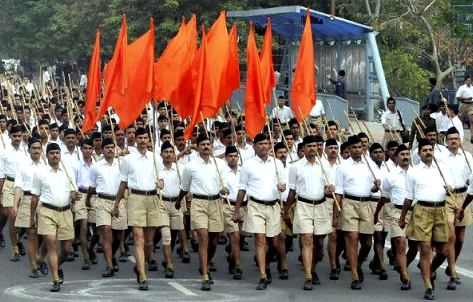
Dalit Resistance: Navigating Assimilation and Confronting Caste Violence
The RSS’s glorification of Hindu traditions rooted in Vedic texts and Manusmriti upholds the caste hierarchy that marginalizes Dalits, who constitute 16.6% of India’s population (2011 Census). Despite outreach programs like the Samajik Samrasta Manch, the RSS’s efforts are criticized as assimilationist, aiming to counter Ambedkar’s anti-caste ideology by portraying Dalits as part of an undifferentiated Hindu community. The RSS’s silence on upper-caste dominance within its ranks undermines inclusivity claims. Vigilante violence against Dalits in BJP-ruled states, often under cow protection pretexts, has surged since 2014. The 2016 Una flogging incident and 2023 Hathras rape-murder case sparked protests, exposing RSS’s tacit support for casteist violence. Human Rights Watch reported over 50 Dalit deaths in cow-related lynchings from 2015 to 2023, with Bajrang Dal and VHP members implicated.

Dalit resistance, inspired by Ambedkar, has grown through organizations like the Bhim Army and movements like #DalitLivesMatter, active on X in 2024–2025. Posts by @BhimArmyChief (May 2025) criticized the RSS for “using Dalits as pawns while protecting Brahminical supremacy.” The 2025 Indo-Pakistan clash highlighted RSS’s exclusionary narrative, overshadowing Dalit soldiers’ contributions. Dalit intellectuals argue that the RSS’s Hindu Rashtra vision perpetuates caste oppression, driving many to embrace Ambedkarite secularism.
Buddhist Resistance: Resisting Cultural Appropriation and Upholding Anti-Caste Identity
Neo-Buddhists, primarily Dalits who converted to Buddhism following Ambedkar’s 1956 mass conversion, represent a challenge to RSS’s Hindutva project. Ambedkar’s Buddhism, embraced by over 8 million Indians (2011 Census), rejects Hinduism’s caste structure. The RSS’s portrayal of Gautama Buddha as a Hindu avatar, seen in VHP campaigns, is viewed as cultural appropriation to dilute Buddhism’s anti-caste message. The 2018 Bhima Koregaon violence, where RSS-affiliated mobs attacked Dalit-Buddhist commemorations, killed one and injured dozens, highlighting intolerance of Buddhist identity. Anti-conversion laws in BJP-ruled states further alienate Buddhists, as noted in Amnesty International’s 2024 report. X posts by @AmbedkarCaravan (April 2025) condemned the RSS for “stealing Buddha to mask caste oppression.”
The 2025 Indo-Pakistan clash saw Godi Media marginalize Buddhist contributions, focusing on Hindu nationalist themes. Buddhist monks and activists, such as the Ladakh Buddhist Association, opposed RSS’s communal rhetoric, advocating for interfaith harmony. Buddhist resistance reinforces Ambedkar’s vision of social justice and secularism.
Civil Society and International Pushback: Organizations like Citizens for Justice and Peace document RSS abuses, while international reports by Amnesty International and Human Rights Watch criticize India’s democratic backsliding. Court rulings against hate speech, such as the 2023 Supreme Court order on communal rhetoric, offer legal recourse, but RSS’s institutional grip limits progress. The resistance of minorities, secularists, and activists remains a vital counterforce to Hindutva’s dominance.

11. Conclusion The RSS’s century-long journey from a fringe group to a dominant force has reshaped India’s secular fabric, promoting Hindutva through violence, propaganda, and political control. Its atrocities against Muslims and Christians, coupled with recent escalations like the 2025 Indo-Pakistan clash, underscore its threat to democracy and regional peace. Global awareness, diplomatic pressure, and robust counter-extremism measures are urgent.

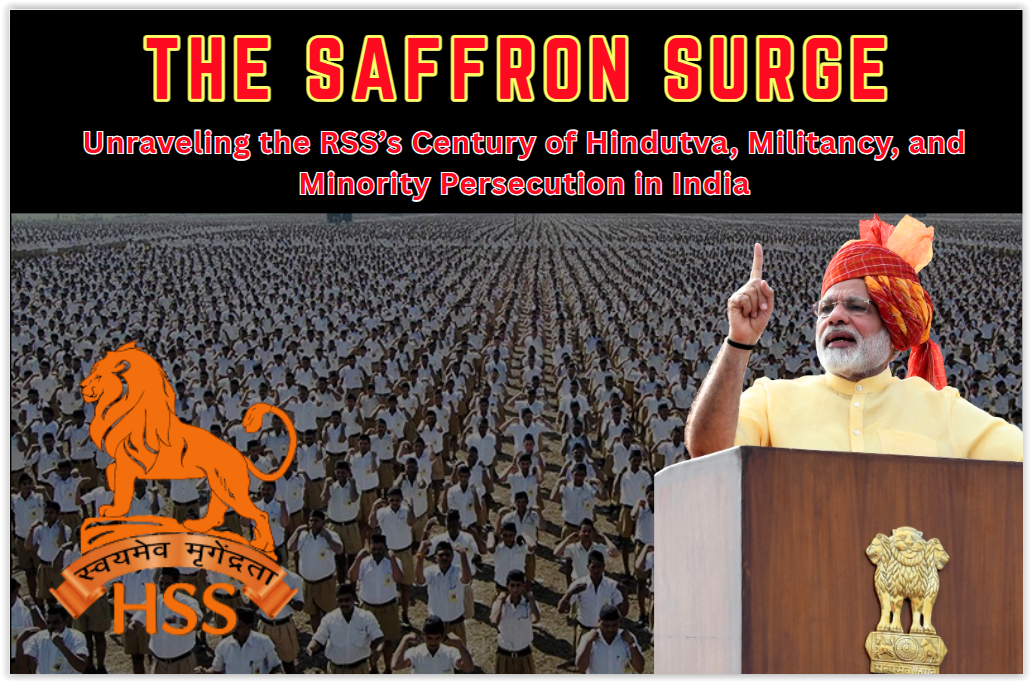

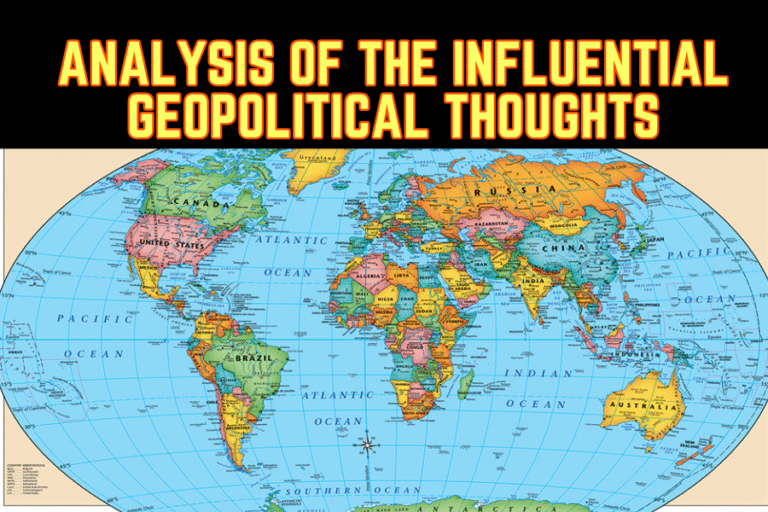
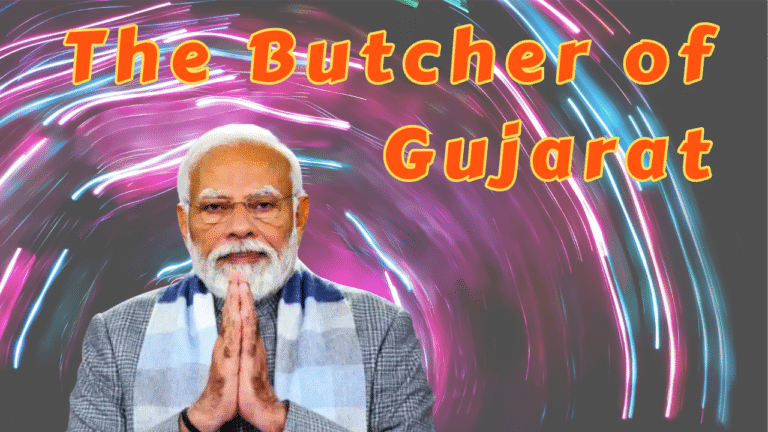



One Comment